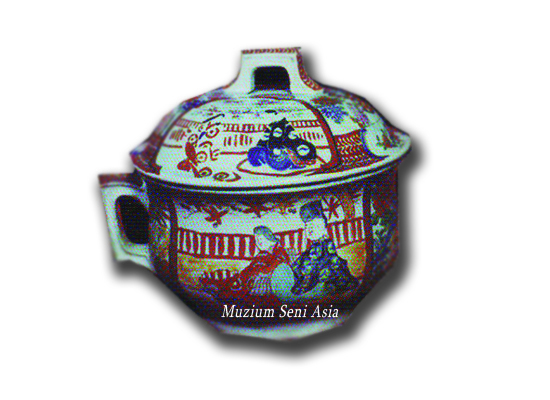Arita ware is the ganeral term for porcelain made at present-day Arita-chou and its surrounding towns such as Izumiya. In this area, porcelain stone has been quarried for almost 400 years since 1616 AD. A Korean craftsman, Sam Pyun Lee is said to have discovered a good clay mine in Izumi Mountain, producing what is said to be the oldest porcelain in Japan.
Due to the fact that the product made in Arita-sarayama was shipped from Imari port in the Edo era, it was called "Imari ware" or "Imari". Following the Bunroku War (1592) and Keichoh War (1597) during which Hideyoshi Toyotomi sent troops to Korea, large number of potters came from Korea to Japan; they built many kilns at various locations.

Kakiemon
Kakiemon porcelain is also produced in the Arita area. Kakiemon I (ca. 1596-1666) of the Sakaida family is considered to be the first person to produce porcelain using enamel techniques and overglaze colours in Japan. Kakiemon ware comes primarily in square, octagonal or hexagonal shapes. Typical colours for Kakiemon ware are red, light blue, yellow and bluish green. In 1971 it was declared an "intangible cultural treasure" by the Japanese goverment. The best known as Arita blue and white porcelain, is characterized by a typical inky underglaze with elegant blue and elegant, often lively, patterns. The general term for porcelain in white and underglaze blue is Sometsuke.
Last Update: 26/02/2022